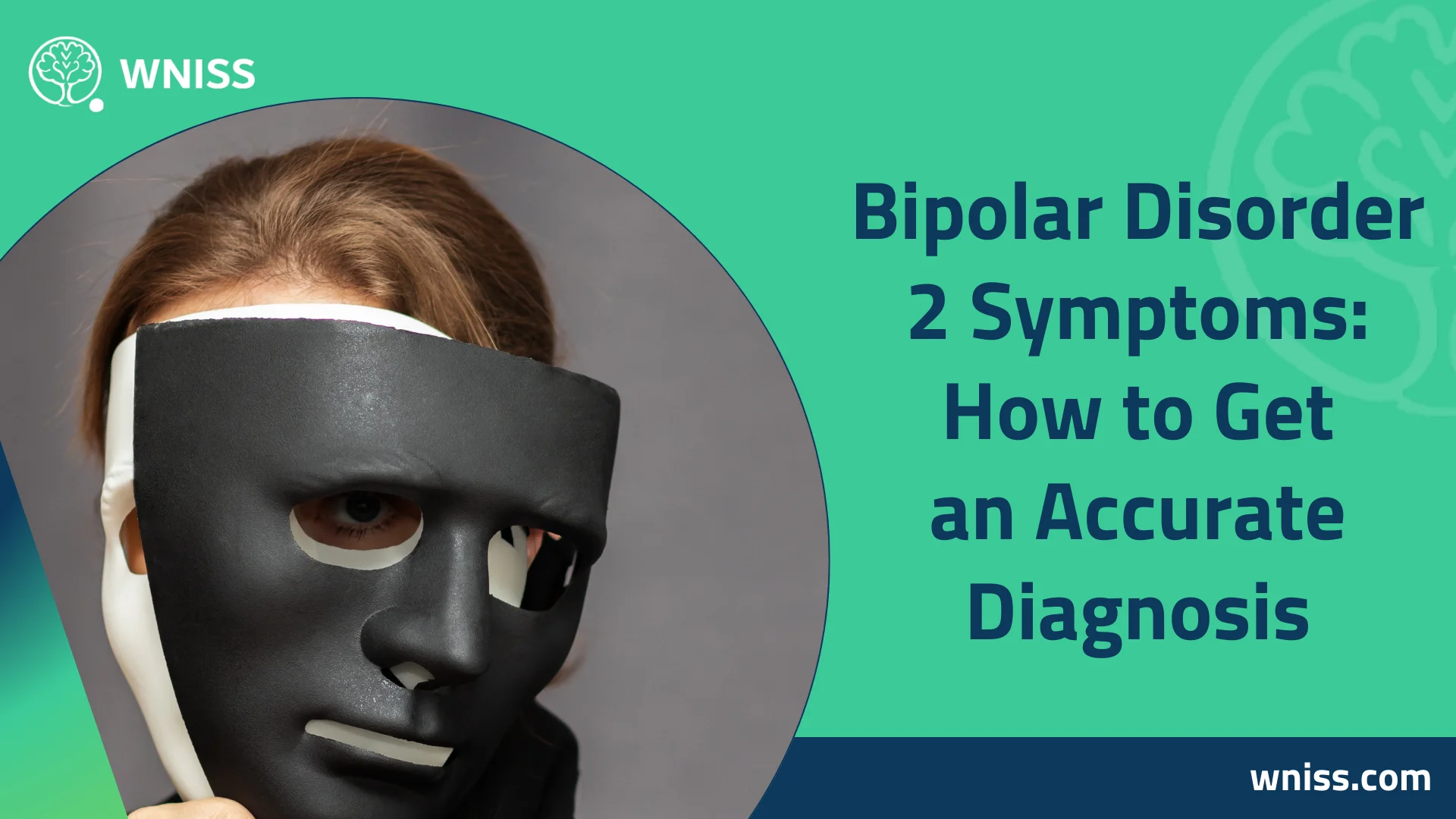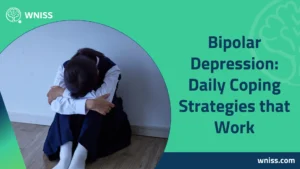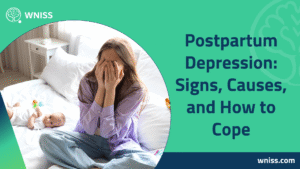When people search for bipolar disorder 2 symptoms, they’re usually noticing mood patterns that go beyond ordinary ups and downs. Bipolar II involves at least one major depressive episode alongside a hypomanic episode—a lighter “up” marked by extra energy, confidence, and less sleep, but not the loss of control seen in full mania. Recognizing this pattern is key, since it shapes treatment choices, therapy goals, and the routines that support lasting stability.
What Bipolar II Really Looks Like?
Bipolar II isn’t “moodiness.” It’s a time-pattern—depressive episodes that can feel heavy and long, and hypomanic periods that feel lighter, faster, and more confident than your baseline, often after sleep gets shorter. Unlike Bipolar I, hypomania doesn’t include full-blown mania or psychosis, and many people still function—sometimes too well—until sleep loss and impulsive choices catch up.
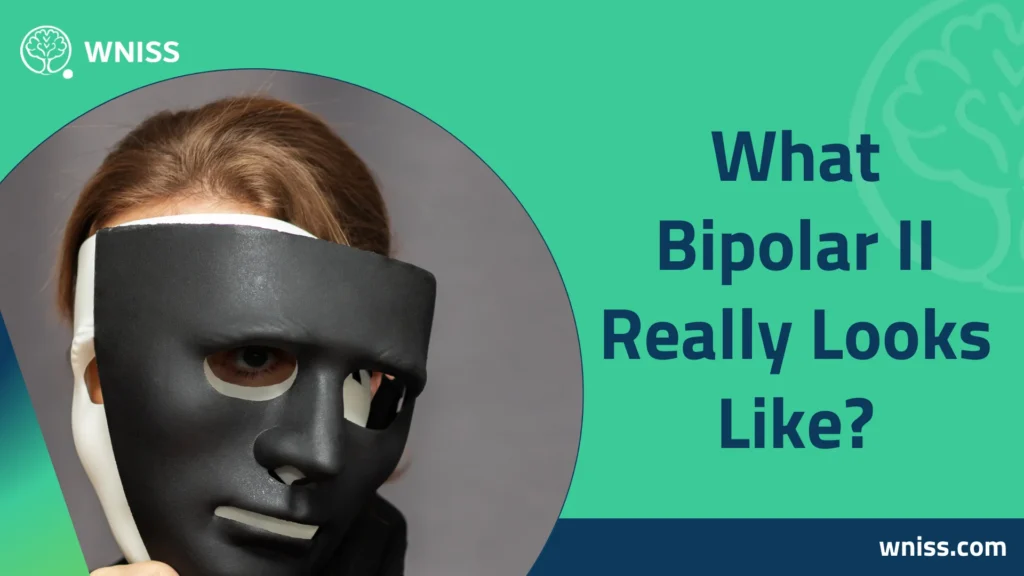
Depressive episode (the heavy weeks):
- Low mood or loss of interest, fatigue, slowed thinking/speech
- Sleep and appetite changes (too much or too little)
- Concentration problems, guilt, pessimism; thoughts of death in severe cases
Hypomanic episode (the lighter “up”):
- Reduced need for sleep (e.g., 5–6 hours and you still feel “fine”)
- Faster speech/ideas, elevated or irritable mood, rising confidence
- More projects, socializing, or spending; judgment can wobble—especially with stress or poor sleep
- No frank psychosis; hospitalization is not typically required for hypomania
Mixed features (watch this):
- Depressed mood with racing thoughts or agitation; or speed/irritability with a dark mood—this raises risk and demands activation-safe planning.
The Earliest Red Flags of Bipolar II
People ask, “What’s the first sign of bipolar disorder 2?” It’s rarely one symptom. It’s a cluster—especially changes in sleep, speed, and risk—that show up together over days.
- Actionable cluster to watch:
- Sleeping less and feeling more energized (not just wired and tired)
- Faster speech/ideas; extra confident or irritable
- Sudden project pile-ups, spending surges, or social over-commitment
- A depressed mood that’s agitated or sped-up (mixed features)
- What to do the same day:
- Protect bed/wake times within ±30 minutes, dim the evening, and set a 24-hour pause on big decisions (wait → share with an ally → re-decide tomorrow).
- If two red flags appear together, message your clinician; early adjustment beats crisis later.
Bipolar 2 vs. Bipolar 1 Symptoms
The height of the “up” separates the types. Bipolar I includes mania (often severe and can include psychosis or hospitalization). Bipolar II includes hypomania—similar flavor, less height—but typically more depression across the year. This matters because medication sequences and safety rules differ.
- Bipolar I: mania (± psychosis) → higher acute risk; treatment prioritizes rapid mania control.
- Bipolar II: hypomania (no full mania) plus major depression → treatment prioritizes depression relief without triggering switches.
How Bipolar II Is Diagnosed
There’s no blood test. A good assessment ends with a plan you can run, not just a label.
What clinicians map:
- Timeline: sleep, energy, speech speed, confidence/irritability, spending, and function across months/years
- Validated scales to track change (they support, not replace, clinical judgment)
- Rule-outs/overlaps: thyroid disease, sleep apnea, ADHD, trauma-related conditions, and substance/medication effects
- Specifiers: mixed features or psychotic features (during depression) change urgency and medication safety steps
- What to bring: a two-week sleep/mood log and your past medication responses/side effects—this speeds accuracy.
Treatment That Works for Bipolar II
Best results come from medication + psychotherapy + rhythm protection, measured weekly so progress is visible.
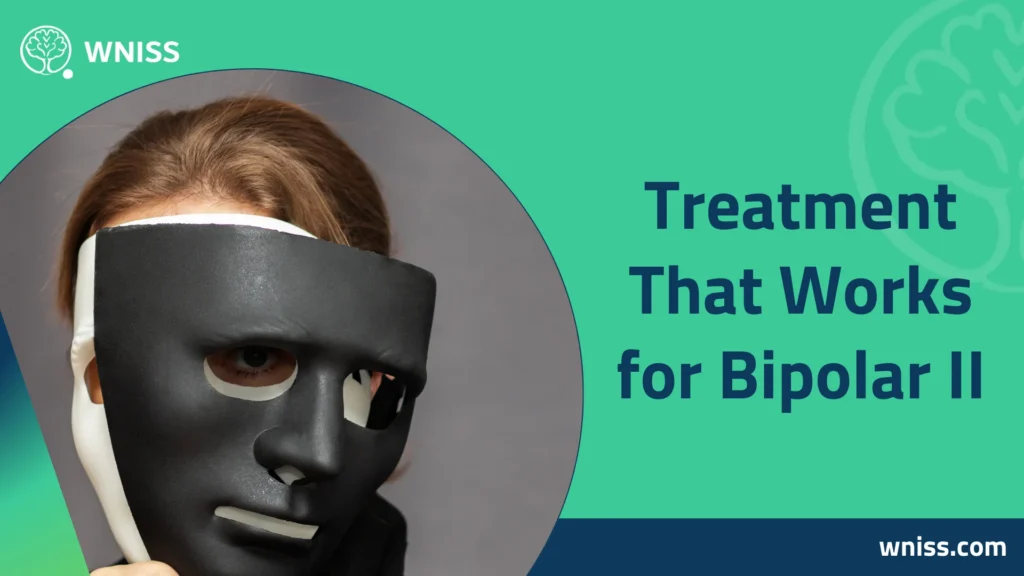
Medication (foundation, individualized):
- For bipolar depression, guideline-supported choices include selected atypical antipsychotics and mood stabilizers (e.g., lithium optimization; lamotrigine for depressive polarity and prevention).
- Antidepressants—if considered—are typically used with a mood stabilizer and careful monitoring; antidepressant monotherapy is not recommended in Bipolar I and is contraindicated in mixed/manic states. In Bipolar II, activation-safe planning still applies.
- When severe or resistant: ECT is a legitimate, evidence-based option and can work faster than serial medication trials.
Psychotherapies with teeth (homework you’ll actually use):
- CBT for Bipolar: graded behavioral activation (tiny tasks), thinking tools for pessimistic/grandiose predictions, and activation-safety rules for decisions.
- IPSRT (Interpersonal & Social Rhythm Therapy): stabilizes bed/wake, meals, activity blocks, and social timing—a body-clock backbone that lowers relapse risk.
- FFT (Family-Focused Therapy): teaches brief scripts, reduces conflict, and sets a shared early-warning/crisis plan.
Rhythm & routine (quiet levers, big returns):
- Fixed sleep window (±30 min) and morning light within 60 minutes of waking
- Caffeine cut-off about 8 hours before bed; devices out of bed; short daily movement
- A one-line nightly log: sleep hours, mood 1–10, meds taken, one “kept promise”
A 14-Day Activation-Safe Plan (built for Bipolar II)
Motivation varies; calendars don’t. Pre-decide two weeks so decisions aren’t left to mood at 11 p.m.
- Days 1–3 — Install anchors
- Pick a sleep window (e.g., 11:30–07:00) and hold it within ±30 minutes—even after a bad night.
- Get 10–20 minutes of morning light; add a 5–10 minute movement block.
- Start a one-line nightly log and list 3 red flags (sleep <6 h ×2 nights, racing ideas, spending surge).
- Days 4–7 — Reduce noise & rehearse wins
- Caffeine last call 8+ hours before bed; screens down 60 minutes before bed; install a wind-down (dim → hygiene → brief reading).
- Behavioral activation: two mini-tasks/day (5–20 min)—one self-care, one life admin.
- Opposite action: when the urge is to avoid, do the easiest version for 5 minutes.
- Days 8–10 — Structure & support
- Block a daily focus hour after light/movement for the hardest task.
- Schedule two low-stakes social contacts (walk/text/coffee).
- Hold a 15-minute partner/family check-in: appreciations → what helped → one small change; confirm escalation triggers.
- Days 11–14 — Stress-test & tune
- Simulate a late meeting or travel night; keep the same wake time next morning; use light + a short walk to reset.
- Review your log with your clinician/coach; keep two habits, tweak one friction point (earlier caffeine cut, firmer wind-down).
Your Two-Week Reset Starts Here — WNISS’s Bipolar II Online Program
Choose steady over scattered. When Bipolar II blurs the line between “productive” and “over-amped,” you don’t need random tips—you need one coordinated plan that keeps momentum without lighting hypomania.
- Rapid, compassionate online assessment: we map your episode timeline, sleep, triggers, and goals—then hand you a plain-English plan for the next 2–4 weeks.
- Therapy you’ll actually use: IPSRT + CBT with micro-homework (5–20 minutes) that shows up in real life—decisions, conversations, sleep.
- Medication coordination: we liaise with your prescriber for activation-safe choices and smart dose timing (including travel/shift-work strategies).
- Dashboards you can trust: 60-second nightly logging and weekly reviews—so progress becomes visible, not vague.
- Life-fit routines: parenting, study, shift work, or travel—anchors that survive busy seasons.
Ready to install calm momentum? Book a confidential session now at WNISS and start your 14-day reset with a specialist by your side.
FAQs about Bipolar Disorder 2 Symptoms
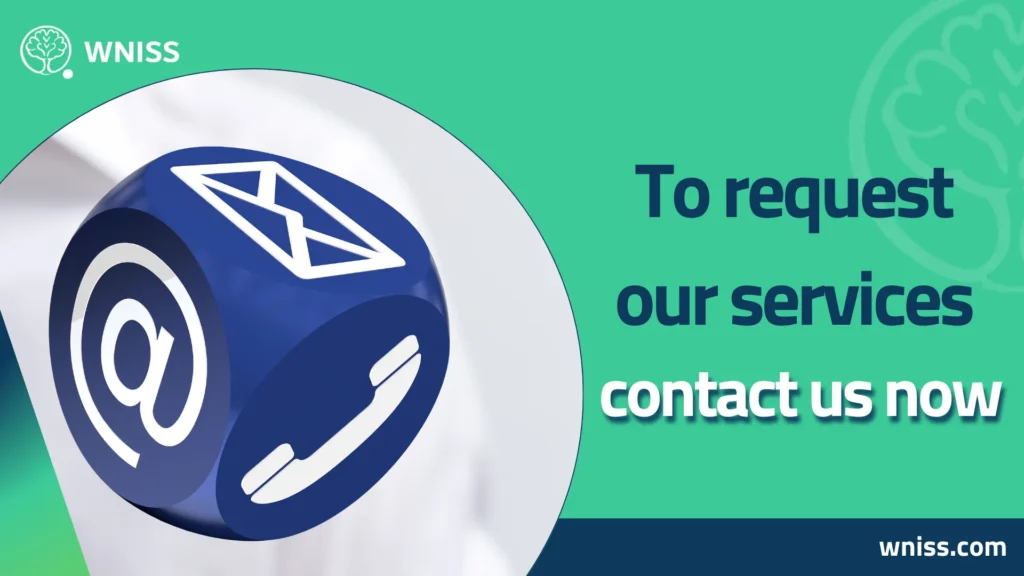
What does having Bipolar 2 feel like?
Many describe long depressive stretches punctuated by hypomanic bursts—fewer hours of sleep, faster ideas, more confidence or irritability, more projects and social energy. The “ups” feel useful—until sleep erodes judgment.
How is Bipolar II treated?
With an integrated plan—medication tailored to bipolar depression and prevention, structured psychotherapy (CBT/IPSRT/FFT), and rhythm protection (sleep timing, morning light, caffeine cut-off), tracked weekly.
What is the difference between bipolar 1 and 2 symptoms?
Bipolar I includes mania (often severe, may include psychosis/hospitalization). Bipolar II includes hypomania (lighter “up”) plus major depression—often more depressive weeks across the year.
How is Bipolar type 2 diagnosed?
By a structured clinical interview that maps episodes across time, rules out medical/substance mimics, and uses brief scales to track change. Bring a two-week sleep/mood log to speed accuracy.
How do Bipolar 2 people act?
Between episodes, many function normally. During hypomania, people may be more social, productive, confident, or irritable—and sleep less. During depression, energy, motivation, and hope shrink.
Can Bipolar 2 go away?
There’s no “once-and-done” cure, but long, stable periods are common with ongoing care. The winning system is consistent medication/therapy, circadian stability, and weekly fine-tuning.
Bipolar disorder 2 symptoms are understandable, trackable, and highly manageable with the right system: a diagnosis based on timelines (not snapshots), activation-safe medication choices, CBT/IPSRT delivered consistently, and small daily anchors that keep your body clock steady. Start the 14-day plan above, track one line each night, and tune weekly. If you want a kind, coordinated roadmap that fits your life, WNISS can meet you online and help you turn good intentions into steadier weeks—this month.
Medical References
- National Institute of Mental Health (NIMH). Bipolar Disorder — Symptoms & Treatment.
https://www.nimh.nih.gov/health/topics/bipolar-disorder - NICE Guideline CG185. Bipolar disorder: assessment and management (adults).
https://www.nice.org.uk/guidance/cg185

